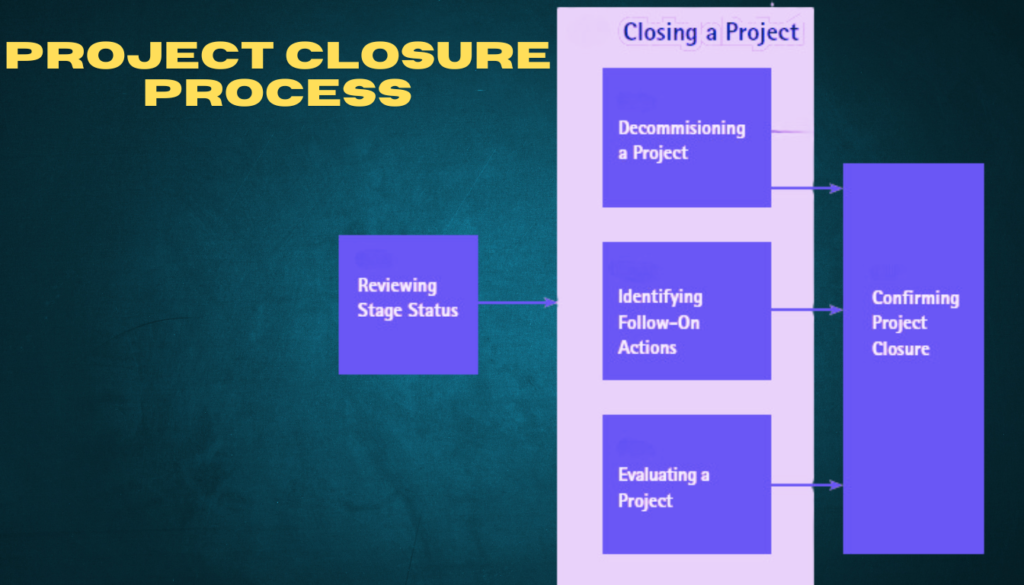Introduction
Effective project closure is a vital aspect of successful project management. It ensures that all project objectives are met, deliverables are accepted, and valuable lessons are documented for future reference. Without a proper closure process, projects can leave loose ends that may impact future work and stakeholder satisfaction.
You will delve into the essential tools and software for project closure that can help streamline this critical phase. I will also provide a comprehensive frequently asked questions (FAQ) to address common questions and concerns, ensuring you have all the information needed to close your projects efficiently. Additionally, I will offer actionable insights and best practices to help you navigate the project closure process with confidence and ease.
By understanding and implementing these strategies, you can ensure a smooth transition from project start-up, project completion to project closure, setting the stage for continuous improvement and future success.
Table of Contents
History
The concept of Project Closure has evolved significantly over the years, becoming a crucial phase in the project management lifecycle. Initially, project closure was often overlooked, with teams focusing more on project initiation and execution. However, as project management methodologies matured, the importance of formally closing projects became evident.
| Period | Description |
|---|---|
| Early Days | Projects were deemed complete once the final deliverable was handed over, with little evaluation. |
| Introduction of Frameworks | PMBOK and PRINCE2 introduced formal processes for closing projects. |
| Modern Project Closure | Recognized as a critical phase involving finalizing activities, obtaining acceptance, and evaluations. |
In the early days, projects were often deemed complete once the final deliverable was handed over. There was little emphasis on evaluating project performance or documenting lessons learned. This approach led to repeated mistakes and missed opportunities for improvement.
What is Project Closure?
Project Closure is the final phase in the project management lifecycle, marking the formal completion of a project. This phase ensures that all project deliverables are completed and accepted, and that the project objectives have been met. It involves several key activities to ensure a smooth transition and proper documentation.
It is important to know the essential project documents for each phase. You can also Download a Free project documentation checklist here.
This phase is often seen as the last opportunity to assess the project’s overall performance, address any outstanding issues, and ensure that all objectives have been met.
This phase is crucial for ensuring that all loose ends are tied up and that the project is officially closed in a structured manner.

During project closure, the project team conducts a final review to verify that all tasks are completed and the project meets the agreed-upon criteria. This includes obtaining formal acceptance from stakeholders, ensuring all contractual obligations are fulfilled, and releasing project resources.
Additionally, project closure involves documenting lessons learned and best practices for future projects. This helps organizations improve their processes and avoid repeating mistakes. A final project report is usually prepared, summarizing the project’s performance, outcomes, and any deviations from the plan.
Importance of Project Closure
The importance of project closure cannot be overstated, as it offers several key benefits that contribute to the overall success of a project.
Ensures Deliverable Acceptance
Project closure guarantees that all deliverables are completed to the satisfaction of stakeholders, ensuring that the project meets its objectives and criteria. This formal acceptance helps in avoiding any disputes or misunderstanding.
Resource Release
By formally closing the project, resources such as team members, equipment, and budget can be released and reallocated to other projects. This optimizes resource utilization and prevents unnecessary costs.
Documentation and Lessons Learned
One of the most valuable aspects of project closure is the documentation of lessons learned. This process captures what went well and what didn’t, providing valuable insights for future projects and helping to improve organizational processes.
Financial Closure
Project closure involves finalizing all financial aspects, including settling any outstanding payments and ensuring that the project stays within budget. This is crucial for accurate financial reporting and accountability.
Stakeholder Satisfaction
A well-executed project closure ensures that all stakeholders are satisfied with the project’s outcomes. This builds trust and strengthens relationships, which is essential for future collaborations.
By emphasizing these aspects, the importance of project closure becomes clear, highlighting its role in ensuring project success and organizational growth.
Celebrating Project Success
Celebrating project success is an important aspect of project closure. It provides an opportunity to acknowledge the hard work and dedication of the project team and stakeholders. Celebrations can take various forms, such as team recognition events, thank-you notes, or even small tokens of appreciation. Celebrating project success not only boosts team morale but also helps build a positive project culture and motivates team members for future projects.
Steps in Project Closure
| Step | Description |
|---|---|
| Confirm Completion of Deliverables | Verify that all deliverables meet criteria and obtain formal acceptance from stakeholders. |
| Conduct a Final Review | Perform a comprehensive review of the project’s performance against the initial plan. |
| Release Project Resources | Reallocate team members, equipment, and budget to other projects or tasks. |
| Document Lessons Learned | Capture and document valuable insights and lessons learned throughout the project. |
| Finalize Financials | Close all financial aspects, settle payments, and confirm budget adherence. |
| Archive Project Documents | Store all project-related documents in a centralized repository for future reference. |
| Conduct a Closure Meeting | Hold a meeting with stakeholders and the project team to formally close the project. |
| Celebrate Success | Acknowledge the achievements of the project team and celebrate their success. |
Pros and Cons
| Aspect | Pros | Cons |
|---|---|---|
| Efficiency | Streamlined processes save time and resources. | Proper planning and documentation can be time-consuming. |
| Resource Management | Optimal use of resources reduces waste. | Some projects or tools may require significant resources. |
| Communication | Improved communication among team members and stakeholders. | Implementing new communication methods may face resistance. |
| Risk Mitigation | Early identification of issues helps mitigate risks. | Managing multiple risks can become complex. |
| Stakeholder Satisfaction | Meeting objectives and delivering quality results enhance trust and satisfaction. | High initial costs might not be feasible for all organizations. |
| Time Management | Efficient planning leads to timely project completion. | Lengthy planning processes can delay project start. |
| Complexity | Structured processes help manage complex tasks effectively. | Managing multiple tasks and deadlines can become challenging. |
| Change Management | New processes or tools can improve overall project outcomes. | Resistance to change from team members accustomed to old methods. |
| Cost Management | Effective cost management ensures projects stay within budget. | Some tools or projects may involve high initial costs. |
Common Challenges in Project Closure
Project closure is a crucial phase in project management, but it often comes with several challenges. Here are some common challenges faced during project closure:
Incomplete Deliverables
Ensuring that all deliverables meet the required standards and are fully completed can be challenging, especially if there were scope changes during the project.
Unresolved Issues
Identifying and resolving all issues before closing the project is essential, but some issues may remain unresolved due to time or resource constraints.
Stakeholder Approval

Obtaining formal acceptance from all stakeholders can be difficult if there are differing opinions or unmet expectations.
Resource Reallocation
Effectively reallocating resources, including team members and budget, can be complicated, especially if resources are already committed to other projects.
Documentation
Comprehensive documentation of the project, including lessons learned and final reports, is time-consuming but necessary for future reference and continuous improvement.
Financial Closure
Ensuring all financial aspects are settled, including outstanding payments and budget reconciliation, can be complex and requires meticulous attention to detail.
Archiving Project Documents
Properly archiving all project-related documents for future reference is essential but often overlooked due to time constraints.
Team Transition
Managing the transition of the project team to new assignments or projects can be challenging, especially if team members are dispersed or have conflicting schedules.
By addressing these common challenges, project managers can ensure a smooth and effective project closure, leading to successful project outcomes and continuous improvement.
Best Practices for Successful Project Closure
| Best Practice | Description |
|---|---|
| Confirm Deliverables | Verify that all deliverables meet criteria and obtain formal acceptance from stakeholders. |
| Conduct a Final Review | Perform a comprehensive review of the project’s performance against the initial plan. |
| Document Lessons Learned | Capture valuable insights and lessons learned throughout the project. |
| Finalize Financials | Ensure all financial aspects are settled, including outstanding payments and budget reconciliation. |
| Release Project Resources | Reallocate team members, equipment, and budget to other projects or operational tasks. |
| Archive Project Documents | Store all project-related documents in a centralized repository for future reference. |
| Conduct a Closure Meeting | Hold a meeting with stakeholders and the project team to formally close the project. |
| Celebrate Success | Acknowledge the hard work and achievements of the project team. |
Tools and Software for Project Closure

Using the right tools and software can significantly streamline the project closure process. Here are some essential tools and software for successful project closure:
Project Management Software
Tools like Trello, Asana, and Monday.com help manage tasks, track progress, and ensure that all deliverables are completed. They provide visual boards and timelines to monitor the project’s status.
Document Management Systems
Software like Google Drive, Dropbox, and SharePoint allows for secure storage, sharing, and archiving of project documents. This ensures that all project files are organized and easily accessible.
Financial Management Tools
Tools such as QuickBooks and FreshBooks help in finalizing financials by tracking expenses, managing invoices, and reconciling budgets. They ensure that all financial aspects of the project are settled.
Issue Tracking Software
Tools like Jira and Bugzilla are essential for identifying and resolving any outstanding issues before project closure. They help in tracking, managing, and documenting issues effectively.
Collaboration Platforms
Platforms such as Slack and Microsoft Teams facilitate communication and collaboration among team members and stakeholders. They ensure that everyone is on the same page during the closure phase.
Reporting Tools
Software like Tableau and Microsoft Power BI provide detailed reports and analytics on project performance. They help in conducting a final review and documenting lessons learned.
Resource Management Tools
Tools like Resource Guru and Float assist in reallocating resources, including team members and equipment, to other projects. They help in optimizing resource utilization.
Conducting a Project Review and Lessons Learned

The project review and lessons learned phase is a critical component of project closure. It allows the project team to assess the project’s overall performance, identify areas for improvement, and capture valuable insights for future projects. Here are some key steps to follow when conducting a project review and capturing lessons learned:
Evaluate the Project’s Performance
Evaluate the project’s performance against the initial goals and objectives. Assess whether the project achieved the desired outcomes and if any deviations occurred.
Identify Successes and Areas for Improvement
Determine what worked well in the project and what could have been done differently. This helps identify best practices to replicate in future projects and areas that need improvement.
Engage the Project Team in the Review Process
Gather feedback and input from team members to capture different perspectives and insights. This fosters a collaborative environment and ensures that everyone’s experiences and opinions are considered.
Document the Lessons Learned

Capture the key findings, insights, and recommendations from the project review. This documentation serves as a valuable resource for future projects and helps avoid repeating mistakes or reinventing the wheel.
Share the Lessons Learned
Share the lessons learned with the project team and stakeholders. Communicate the outcomes of the project review and the identified lessons learned to all relevant parties. This promotes knowledge sharing and ensures that the insights gained are disseminated effectively.
Conclusion and Final Thoughts
While project closure may seem like an administrative task, it is a critical component of project management that should not be overlooked. Successful project closure ensures that all project objectives have been achieved, stakeholders are satisfied with the outcomes, and valuable lessons are learned for future projects.
Closing a project is a crucial step that ensures all objectives are met, deliverables are accepted, and valuable lessons are documented. By following best practices and leveraging the right tools and software, project managers can streamline the closure process and achieve positive outcomes. Project closure is a very important phrase to be part of project manager’s glossary of terms.
Effective project closure involves confirming deliverables, conducting final reviews, documenting lessons learned, finalizing financials, releasing resources, and archiving project documents. Utilizing project management software, document management systems, financial tools, and collaboration platforms can significantly enhance the efficiency of this process.
It is important to know the essential project documents for Project Closure. You can also Download a Free project closure checklist here.
In conclusion, a thorough and well-executed project closure not only marks the end of a successful project but also sets the stage for continuous improvement in future projects. By reflecting on what worked well and what can be improved, organizations can build on their successes and drive better results in subsequent endeavors.
FAQ
What is project closure?
Project closure is the final phase of a project where all activities are completed, deliverables are handed over, and the project is formally closed.
Why is project closure important?
It ensures that all project objectives are met, deliverables are accepted by stakeholders, and lessons learned are documented for future projects.
What are the key steps in project closure?
Key steps include confirming deliverables, conducting a final review, documenting lessons learned, finalizing financials, releasing resources, archiving documents, and conducting a closure meeting.
How do you confirm project deliverables?
Verify that all deliverables meet the agreed-upon criteria and obtain formal acceptance from stakeholders to ensure project objectives are fully met.
What should be included in project closure documentation?
Closure documentation should include final project reports, lessons learned, financial summaries, and any other relevant project documents.
How do you handle unresolved issues during project closure?
Identify any unresolved issues, document them, and create a plan for addressing them post-closure, ensuring stakeholders are informed.
What tools can help with project closure?
Tools such as project management software (e.g., Trello, Asana), document management systems (e.g., Google Drive, Dropbox), and financial management tools (e.g., QuickBooks, FreshBooks) can streamline the project closure process.

